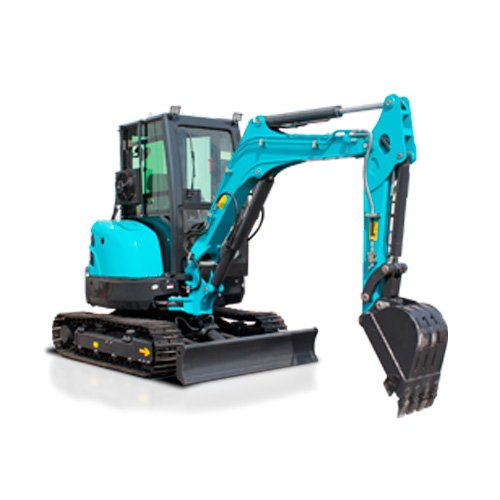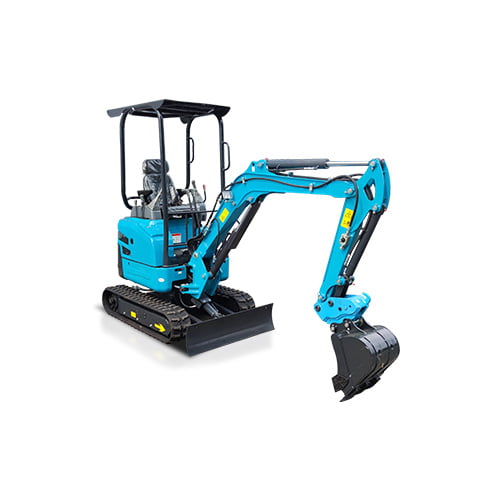Are you in the construction or landscaping industry? If so, you’ve probably come across the term “excavator rake” at some point. This powerful tool is designed to enhance the capabilities of your excavator and make your job easier. In this article, we will delve into the world of excavator rakes, exploring their types, benefits, usage tips, and much more. So let’s get started and eliminate your fears and doubts about excavator rakes once and for all!
What is an excavator rake?

An excavator rake is an attachment that can be fitted onto an excavator. It consists of strong, pointed tines or teeth that are arranged in a grid-like pattern. The purpose of an excavator rake is to help in various tasks such as land clearing, site preparation, demolition, and debris sorting. It is commonly used in construction, forestry, and agriculture.
Types of excavator rakes
Excavator rakes come in different types, each suited for specific applications. The most common types include:
1. Root rakes
Root rakes are designed to remove roots, stumps, and other debris from the ground. They are particularly useful in land clearing projects where vegetation needs to be removed before construction can begin.
2. Brush rakes
Brush rakes are ideal for clearing brush, shrubs, and small trees. They have closely spaced tines that allow for efficient removal of vegetation while leaving the soil intact.
3. Rock rakes
Rock rakes are heavy-duty attachments used for clearing rocks, stones, and boulders from the ground. They are commonly used in site preparation for construction projects or in agricultural settings.
4. Grapple rakes
Grapple rakes combine the functions of a rake and a grapple. They can grab, lift, and move large objects, making them versatile tools for various tasks.
Benefits of using an excavator rake
Using an excavator rake offers several benefits, including:
1. Enhanced efficiency
An excavator rake increases the efficiency of your excavator by enabling it to perform a wider range of tasks. It simplifies the process of clearing land, removing debris, and preparing the ground for construction or landscaping.
2. Cost-effective
Investing in an excavator rake can save you time and money. It eliminates the need for manual labor or additional machinery for tasks such as brush clearing or rock removal.
3. Versatility
Excavator rakes come in different sizes and configurations, allowing you to choose the one that best suits your needs. They can be easily attached and detached, providing flexibility in your work.
4. Soil preservation
When clearing vegetation or debris, an excavator rake helps to preserve the soil by minimizing disturbance. It prevents unnecessary erosion and maintains the integrity of the land.
Factors to consider when choosing an excavator rake
-1.jpg)
When selecting an excavator rake, there are a few key factors to consider:
1. Size and compatibility
Ensure that the rake you choose is compatible with your excavator model and size. Different excavators have varying weight capacities and attachment specifications, so it’s crucial to find the right fit.
2. Tine strength and durability
The strength and durability of the rake’s tines are vital for its performance and longevity. Look for high-quality materials and well-designed tines that can withstand the demands of your projects.
3. Application-specific features
Consider the specific features required for your intended applications. For example, if you frequently encounter rocks or debris, a rake with reinforced tines and additional protection might be necessary.
4. Ease of maintenance
Choose an excavator rake that is easy to maintain. Look for designs that allow for quick cleaning, tine replacement, and overall hassle-free maintenance.
How to properly use an excavator rake
To make the most out of your excavator rake, follow these tips:
- Familiarize yourself with the manufacturer’s instructions and recommended operating techniques.
- Inspect the rake and ensure it is securely attached to the excavator before starting any work.
- Assess the terrain and plan your approach. Clear any obstacles or hazards that could hinder the operation.
- Position the excavator and rake in a way that optimizes your visibility and reach.
- Engage the rake slowly and steadily, making sure not to overload it or strain the excavator.
- Use a back-and-forth motion to effectively clear and collect debris. Adjust the angle of the rake as needed.
- Regularly check the rake for wear and tear, and replace any damaged tines or components promptly.
- Practice proper safety measures, such as wearing personal protective equipment and maintaining a safe distance from the work area.
Common misconceptions about excavator rakes
There are a few misconceptions about excavator rakes that we should address:
1. Excavator rakes are only useful for large-scale projects
While excavator rakes are indeed valuable for large-scale projects, they can also be beneficial for smaller-scale tasks. They offer efficiency and versatility regardless of the project size.
2. Excavator rakes damage the environment
When used properly, excavator rakes can minimize environmental damage by preserving the soil and reducing manual labor. They are designed to be efficient and precise, resulting in less disturbance to the land.
3. Excavator rakes are difficult to operate
With proper training and practice, operating an excavator rake can be relatively straightforward. Following the manufacturer’s guidelines and safety protocols ensures safe and efficient usage.
Safety precautions when using an excavator rake
To ensure safety while using an excavator rake, keep the following precautions in mind:
- Always wear appropriate personal protective equipment, including a hard hat, safety goggles, gloves, and steel-toed boots.
- Conduct a thorough inspection of the rake and the excavator before starting work. Look for any signs of damage or loose components.
- Maintain a safe distance from other workers or bystanders while operating the excavator rake.
- Be cautious of underground utilities or hidden obstacles that could pose a risk during excavation.
- Avoid overloading the rake or pushing the equipment beyond its recommended capacity. This helps prevent accidents and equipment failure.
- Follow proper maintenance procedures to ensure the rake remains in optimal working condition. Regularly check for wear, tear, and damage.
Tips for maintaining an excavator rake

Proper maintenance of your excavator rake is essential for its longevity and performance. Here are some tips to keep in mind:
- Clean the rake after each use to remove debris and prevent buildup that can affect its functionality.
- Inspect the tines regularly for signs of wear or damage. Replace any worn or broken tines promptly to avoid further issues.
- Lubricate moving parts to prevent rust and ensure smooth operation.
- Store the excavator rake in a clean and dry area to prevent corrosion and damage.
- Follow the manufacturer’s recommendations for maintenance intervals and procedures.
The cost of an excavator rake
The cost of an excavator rake can vary depending on factors such as size, type, and brand. Prices generally range from a few hundred to several thousand dollars. It is advisable to research different manufacturers and suppliers to find a product that fits your budget and requirements.
Frequently asked questions about excavator rakes
- Q: How do I choose the right size of excavator rake for my machine?
- A: To choose the right size, consider the weight capacity and specifications of your excavator. Consult the manufacturer’s guidelines or seek expert advice if needed.
- Q: Can an excavator rake be used on any type of excavator?
- A: Excavator rakes are designed to be compatible with various excavator models. However, it is essential to ensure the rake you choose matches the specifications of your specific machine.
- Q: Are excavator rakes suitable for residential landscaping projects?
- A: Yes, excavator rakes can be used for residential landscaping projects. They are effective for tasks such as clearing brush, removing roots, or preparing the ground for new features.
- Q: Can an excavator rake handle rocks and boulders effectively?
- A: Yes, certain types of excavator rakes, such as rock rakes, are specifically designed to handle rocks and boulders. These rakes have reinforced tines and rugged construction for efficient rock removal.
- Q: Are excavator rakes difficult to attach and detach?
- A: Excavator rakes are designed for easy attachment and detachment. Most models feature a quick-coupler system that allows for quick and secure connections.
These FAQs address some of the common questions that people have about excavator rakes. If you have any additional queries, it’s always a good idea to consult with professionals or manufacturers to get accurate information.
Conclusion
Excavator rakes are powerful tools that can greatly enhance the capabilities of your excavator. They offer efficiency, versatility, and cost-effectiveness in various construction, forestry, and landscaping projects. By choosing the right type and properly maintaining your excavator rake, you can eliminate obstacles, clear vegetation, and prepare the ground with ease.




